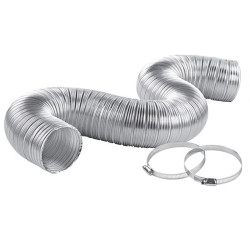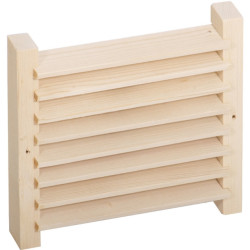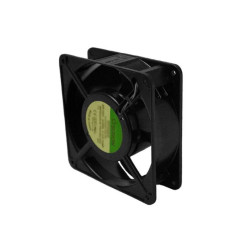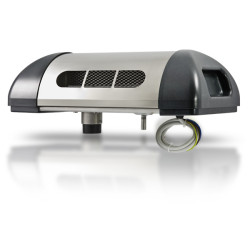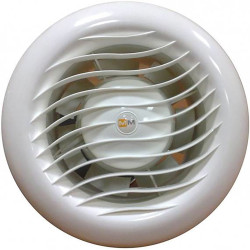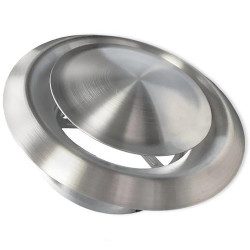In a properly equipped sauna, the heat should be distributed more or less evenly. There should be no extreme heat contrast between the upper and lower sauna bench, which is still rarely found in saunas today. Although the literature in the field of installing saunas is increasing and people's awareness is growing noticeably, those who want to install a good sauna no longer entrust the installation work to ordinary builders, choosing specialists in this field.
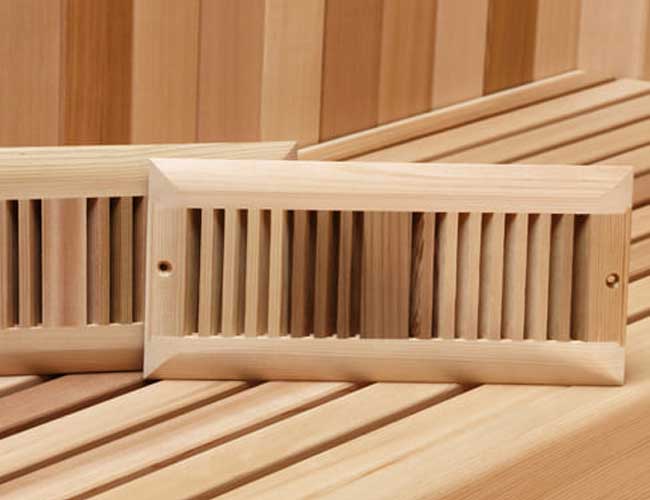 There are two types of ventilation - forced, when an electric sauna fan is used for air extraction, and natural - flat ventilation pipes are led to the ventilation hole in the chimney. Of course, natural, correctly installed sauna ventilation is incomparably better than forced ventilation. With natural ventilation, air extraction is more efficient, it is not noisy and does not require electricity. If the premises in which the sauna is installed are not inhabited, opening the ventilation flaps can safely ensure the ventilation of the premises. However, natural sauna ventilation is more suitable for wood-burning saunas, as a wood-burning heater burns less oxygen than an electric one.
There are two types of ventilation - forced, when an electric sauna fan is used for air extraction, and natural - flat ventilation pipes are led to the ventilation hole in the chimney. Of course, natural, correctly installed sauna ventilation is incomparably better than forced ventilation. With natural ventilation, air extraction is more efficient, it is not noisy and does not require electricity. If the premises in which the sauna is installed are not inhabited, opening the ventilation flaps can safely ensure the ventilation of the premises. However, natural sauna ventilation is more suitable for wood-burning saunas, as a wood-burning heater burns less oxygen than an electric one.
Most of the oxygen in the sauna is burned by metal in contact with air, especially the heating elements of electric heaters burn a lot of oxygen. Therefore, natural ventilation does not ensure sufficient air circulation in the sauna, a large temperature difference is felt at the top and bottom of the sauna. In such a sauna, it becomes unpleasant to sit on the top bench because the skin is hot. Opening the ventilation flap installed in the ceiling would result in loss of hot air. Since the power of electric heaters is very limited, the sauna would cool down quickly and take time to warm up again.
Installing a good ventilation system in a sauna is a complex job that requires specific knowledge. Therefore, it is not worth experimenting here, it is best to use professional sauna experts and contractors for help.
The ventilation system of the sauna consists of:
- Supply of fresh air to the sauna room
- Air extraction
Fresh air supply to the sauna room is necessary to ensure good combustion of the sauna heater and comfortable bathing. A gap is left between the door leaf and the floor for air to flow into the sauna. However, sometimes the space under the door is not enough to ensure excellent ventilation of the sauna, especially when the sauna is heated with a wood-burning heater, which requires a lot of air to ensure good wood burning. In this case, we recommend installing an additional ventilation hole at the bottom of the wall to which the heater is installed. If the heater is with external fuel, then simply bricking the opening around the fuel leaves more space and does not close the space under the fuel of the heater.
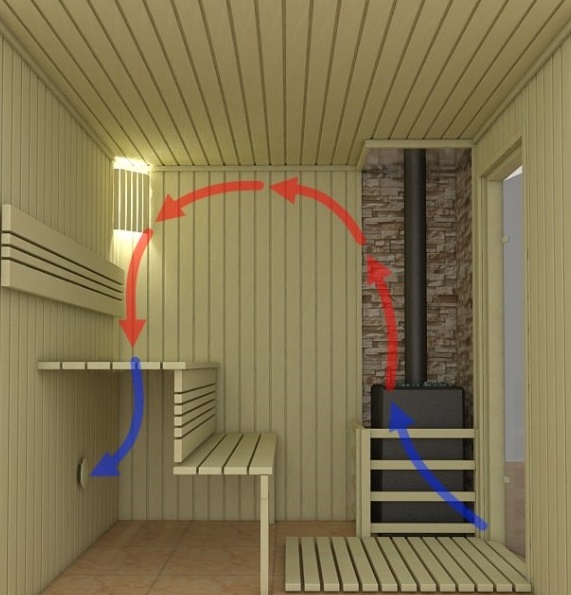
The main principle of ventilation is that all air entering the sauna must be extracted. As already mentioned at the beginning of the article, the air must change during bathing - 7-8 times per hour. The air in the sauna must circulate in circles: when heated from the heater, it rises to the ceiling and spreads over the benches, and when it descends below the benches, it leaves through the extraction hole. In this way, an even air temperature is ensured both at the top and at the bottom of the sauna. Air inlets and outlets must be located in this circle.
The ventilation of the sauna must be installed in the farthest corner of the sauna from the entrance to the sauna, while the heater must be installed near the entrance in order to draw air from under the door of the sauna for the combustion process. The ventilation system of the sauna is installed in the heating layer of the room, so this should be planned in advance before installing the sauna.
The oldest known and used sauna ventilation scheme: air supply - a gap under the door or a hole near the heater to another room. It is the oldest ventilation system that has been used since time immemorial. It works well enough and naturally, there is no additional need to lead the ventilation to the dedicated hole in the chimney or to install a forced fan. However, such ventilation has disadvantages:
- Large temperature differences between the first and second bench areas;
- Insufficient oxygen supply in the bench area.
So, while natural ventilation works great, it has major drawbacks. Therefore, sauna experts have been offering a new ventilation model for some time. According to this model, the air supply remains the same as in the case of natural ventilation - a crack under the door or an opening in the wall under the heater, and air extraction is offered twice - in the ceiling and under the benches.
The main error found when installing sauna ventilation is the incorrect height of the air extraction hole. According to the laws of physics, hot air is lighter than cold air, so it rises. The greater the temperature difference, the greater the difference in air weight, and the stronger the movement of air currents. In the sauna, there are very large differences in air weight and temperature, so the heated air from the heater rises very easily. If the air extraction hole is installed in the ceiling or in the wall near the ceiling, then a lot of energy is lost - heated sauna air rises up and is extracted. If the heater is not powerful enough or its power barely corresponds to the heated volume of the sauna, then there is a possibility that the energy consumption will be high enough.
The higher the extraction hole is installed in the sauna, the more warm air we lose, but the temperature difference is the force that makes the air move. If we installed the air supply and extraction at the floor, both openings directly opposite each other, it would also be incorrect, because the hot air at the top of the sauna would not change, and only the cold bottom of the sauna would be ventilated. In the sauna, it is advisable to install double air extraction - in the ceiling and about 65-70 cm from the floor, under the benches. Air Extraction Functions:
- Ensure good air circulation during the sauna;
- Ensure sufficient room ventilation after sauna procedures.
The air extraction opening at the bottom must be open during the sauna, the draft can be adjusted by installing a sliding or remote control ventilation flap. The air extraction hole in the ceiling at the top must be closed during the sauna, it is opened only after the sauna process to remove excess moisture and to dry the wood of the sauna sufficiently. The ventilation extraction holes are connected by flat 5 cm deep galvanized sheet ventilation pipes, connectors, passage, exit and other details. The entire sauna air extraction system is led to the chimney opening for ventilation or the intended forced extraction opening.
The air flow in the sauna can be regulated by opening and closing the air extraction (ventilation) flap. If we reduce the air extraction by forcing the ventilation flap, then by itself no more air will flow into the sauna. The air flow can be adjusted through the air inlet, the air outlet, and sometimes the heater.
The intensity of air circulation in the sauna is also determined by the power of the heater and its design. Conventional continuous combustion sauna heaters burn a lot of oxygen, storage ones less, and periodic combustion heaters do not burn oxygen at all during the sauna.


